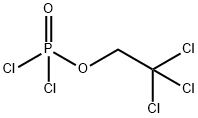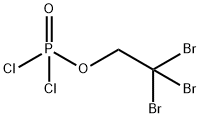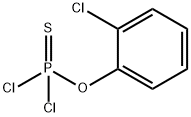METHYL PHOSPHORODICHLORIDITE
Synonym(s):Methyl phosphorodichloridite
- CAS NO.:3279-26-3
- Empirical Formula: CH3Cl2OP
- Molecular Weight: 132.91
- MDL number: MFCD00000524
- EINECS: 221-915-3
- SAFETY DATA SHEET (SDS)
- Update Date: 2023-05-15 10:43:20

What is METHYL PHOSPHORODICHLORIDITE?
Chemical properties
Colourless Liquid
The Uses of METHYL PHOSPHORODICHLORIDITE
Employed in the synthesis of phosphorodichloridothioates1 and oxazaphosphorinanes2 from sulfenyl chlorides and a chiral amino alcohol, respectively.
The Uses of METHYL PHOSPHORODICHLORIDITE
Methyl dichlorophosphite has been employed in the preparation of:
- phosphonamidate- and phosphonate-linked phosphonopeptides
- 2-(2-iodophenyl)ethyl methyl phosphite derivative of an alcohol
- deoxyoligonucleotides on a polymer support
- cis- and trans-2-oxo-2-propionyl-1,3,2-oxazaphosphorinane
- phosphorodichloridothioates
- oxazaphosphorinanes
Properties of METHYL PHOSPHORODICHLORIDITE
| Melting point: | -91 °C (lit.) |
| Boiling point: | 93-95 °C (lit.) |
| Density | 1.376 g/mL at 20 °C (lit.) |
| refractive index | n |
| Flash point: | 104 °F |
| storage temp. | −20°C |
| solubility | soluble in Chloroform, Dichloromethane, Ethyl Acetate |
| form | liquid |
| color | Colorless to Almost colorless |
| Water Solubility | Reacts with water. Soluble in chloroform, dichloromethane and ethyl acetate. |
| Sensitive | Moisture Sensitive |
| BRN | 1697452 |
| Stability: | Flammable. |
| CAS DataBase Reference | 3279-26-3(CAS DataBase Reference) |
Safety information for METHYL PHOSPHORODICHLORIDITE
| Signal word | Danger |
| Pictogram(s) |
 Flame Flammables GHS02  Corrosion Corrosives GHS05  Exclamation Mark Irritant GHS07 |
| GHS Hazard Statements |
H226:Flammable liquids H314:Skin corrosion/irritation H335:Specific target organ toxicity, single exposure;Respiratory tract irritation |
| Precautionary Statement Codes |
P210:Keep away from heat/sparks/open flames/hot surfaces. — No smoking. P233:Keep container tightly closed. P240:Ground/bond container and receiving equipment. P280:Wear protective gloves/protective clothing/eye protection/face protection. P303+P361+P353:IF ON SKIN (or hair): Remove/Take off Immediately all contaminated clothing. Rinse SKIN with water/shower. P305+P351+P338:IF IN EYES: Rinse cautiously with water for several minutes. Remove contact lenses, if present and easy to do. Continuerinsing. |
Computed Descriptors for METHYL PHOSPHORODICHLORIDITE
New Products
4-Fluorophenylacetic acid 4-Methylphenylacetic acid N-Boc-D-alaninol N-BOC-D/L-ALANINOL Tert-butyl bis(2-chloroethyl)carbamate 3-Morpholino-1-(4-nitrophenyl)-5,6-dihydropyridin- 2(1H)-one Furan-2,5-Dicarboxylic Acid Tropic acid S-2-CHLORO PROPIONIC ACID ETHYL ISOCYANOACETATE 2-Bromo-1,3-Bis(Dimethylamino)Trimethinium Hexafluorophosphate (6-METHYL-[1,3]DITHIOLO[4,5-b]QUINOXALIN-2-ONE INDAZOLE-3-CARBOXYLIC ACID 4-IODO BENZOIC ACID (2-Hydroxyphenyl)acetonitrile 4-Bromopyrazole 5,6-Dimethoxyindanone 2-(Cyanocyclohexyl)acetic acid 4-methoxy-3,5-dinitropyridine 2-aminopropyl benzoate hydrochloride 1-(4-(aminomethyl)benzyl)urea hydrochloride diethyl 2-(2-((tertbutoxycarbonyl)amino) ethyl)malonate tert-butyl 4- (ureidomethyl)benzylcarbamate Ethyl-2-chloro((4-methoxyphenyl)hydrazono)acetateRelated products of tetrahydrofuran








You may like
-
![Methyl Dichlorophosphite [Phosphitylating Agent] CAS 3279-26-3](https://img.chemicalbook.in//Content/image/CP5.jpg) Methyl Dichlorophosphite [Phosphitylating Agent] CAS 3279-26-3View Details
Methyl Dichlorophosphite [Phosphitylating Agent] CAS 3279-26-3View Details
3279-26-3 -
 Methyl phosphorodichloridite 95% CAS 3279-26-3View Details
Methyl phosphorodichloridite 95% CAS 3279-26-3View Details
3279-26-3 -
 Methyl dichlorophosphite CAS 3279-26-3View Details
Methyl dichlorophosphite CAS 3279-26-3View Details
3279-26-3 -
 1975-50-4 98%View Details
1975-50-4 98%View Details
1975-50-4 -
 2-HYDROXY BENZYL ALCOHOL 98%View Details
2-HYDROXY BENZYL ALCOHOL 98%View Details
90-01-7 -
 2-Chloro-1,3-Bis(Dimethylamino)Trimethinium Hexafluorophosphate 221615-75-4 98%View Details
2-Chloro-1,3-Bis(Dimethylamino)Trimethinium Hexafluorophosphate 221615-75-4 98%View Details
221615-75-4 -
 14714-50-2 (2-Hydroxyphenyl)acetonitrile 98+View Details
14714-50-2 (2-Hydroxyphenyl)acetonitrile 98+View Details
14714-50-2 -
 118753-70-1 98+View Details
118753-70-1 98+View Details
118753-70-1
Statement: All products displayed on this website are only used for non medical purposes such as industrial applications or scientific research, and cannot be used for clinical diagnosis or treatment of humans or animals. They are not medicinal or edible.